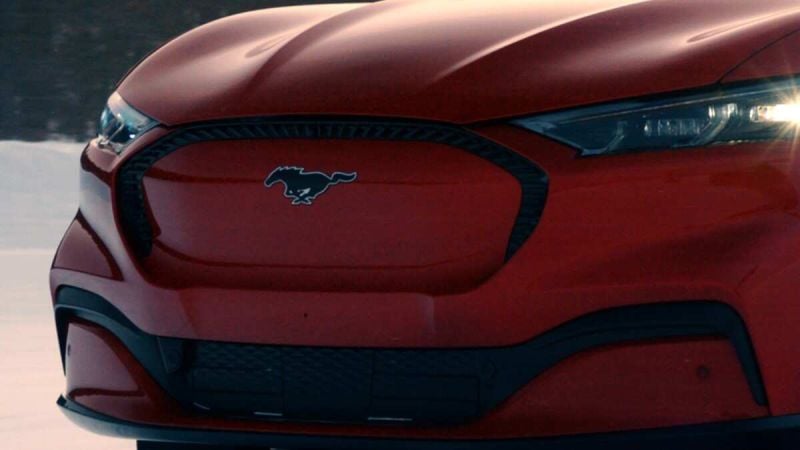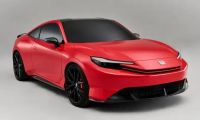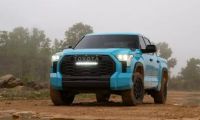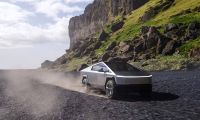With a precedent-setting blizzard and cold snap now battering the nation, you may look out a living room window at your new electric vehicle as you wonder what will happen. The fact is that internal combustion engines (ICE) run on gasoline or diesel and generate heat which, in turn, keeps the vehicle going.
Chargers Make Electric Life Reasonable
Electrics, on the other hand, depend on home charging stations or public charging facilities to top off their charges. While the vehicle is attached to the charger, truth be told, everything is quite rosy. There’s plenty of charge available. However, when you take the vehicle – let’s say it is a Ford F-150 Lightning or a Mustang Mach-E – off the charger, things happen quickly, especially if it is below 0 degrees Fahrenheit.
The rule of thumb in the electric car business is that for every 15 to 20-degree dip on your thermometer, your vehicle’s battery – if it is an electric – drops by roughly half. This honestly starts at 40 degrees Fahrenheit, and it goes down from there. For instance, if you have a range while your vehicle is on a charge of 200 miles, once you take the charger plug off the vehicle, the range drops almost like a stone.
Within a relatively short time, if the temp is below 40, you will find that the 200-mile range is roughly halved. And, as you drive your vehicle, you will find that the range drops further. This week’s cold blast, for example, features temperatures near 0 or well below in much of the central part of the country. You can bet that folks driving their electrics, who forgot to put them on charge in the morning and believed they had an adequate charge, will find that their batteries are draining quickly.
Indeed, many drivers may find themselves hunting for elusive public charging stations to keep their vehicles moving. It’s not that there is a plot against electric vehicles; it is just that battery technology still doesn’t deal with cold- or super-cold weather too well. No matter the type of battery – lithium-ion, for instance, or solid-state or sodium-derived – the chemistry that provides power to the battery pack’s anodes and the electric motor is radically slowed in the cold. Indeed, it is slowed, and the battery pack loses power in the cold. Super-cold affects ICE vehicles, as well. But, and it is a big but, once an engine turns over and the alternator takes over, the engine keeps on running, no matter how you get it to turn over.
A Battery Life Primer
Indeed, you can gain an appreciation of what happens to an electric if you drive an ICE-driven vehicle with a weak battery in the cold. A weakened battery that is borderline most of the time when the weather is over 20 degrees or so will suddenly no longer support even cranking a vehicle when the temp heads toward 0. The saving grace is that you can jump from a vehicle with a good battery, and your vehicle will start and run until you stop it. An electric vehicle cannot do this because it is, after all, driven by a battery.
That said, there are some things you can do to help ensure that your electric still gets you home from the office or market, or wherever. Indeed, Ford has posted a video showing what you can do to ensure that your electric, in this case, the F-150 Lightning electric pickup, has enough charge to keep rolling.
Ford’s video has eight tips that will keep your electric rolling. The automaker put its electric pickups through very rigorous testing in Alaska and Michigan’s wintertime Upper Peninsula where they encountered cold and snow. The automaker also used an atmospheric chamber to run cold and warm weather extreme tests over a range of 40 below to 140 above.
Interestingly, Ford has developed a way to keep its battery system with a thermal management system that circulates heated liquid to the vehicle’s battery pack. However, since the vehicle is an electric and it relies on the electrical system to heat and cool the liquid, it does impact the range of the Lightning. Still, it is a good attempt at keeping some range in the vehicle.
Ford Video Has Electric Vehicle Tips
Though this is discussed in Ford’s video, Torque News thought it would be a good idea to mention the basics of electric care in the text of this story, as well.
Here are Ford’s tips, most of which are common sense, especially in the winter.
1. Park inside a garage, if you can, whenever possible
2. Keep your vehicle hooked to its charge cable or station when it is parked
3. If you have a longish commute planned, use the FordPass app or the vehicle’s info screen to warm the battery while the vehicle is plugged in
4. Watch the battery warming system, Ford warns, as the drain on the electrical system is significant. On the road, Ford suggests using the heated seats and steering wheel for heat, though if the weather is below 0, you will likely have to rely on the heating system. Realize that this will severely cut the range
5. If you are charging the vehicle, turn off the heater if you can – unless you are sitting inside – and realize that the heater will cut the range, as noted
6. Be sure to clear the vehicle of all snow and ice to cut weight which cuts the range in the cold
7. Be sure that your vehicle’s tires are properly inflated
8. Drive at moderate speeds to keep from using too much of the charge
That wraps up the tips on cold-weather electric vehicle use. Remember, you can get through a cold snap like this week’s bone-chilling cold. It takes thought, planning, and action, but your electric vehicle will come through for you, although you might not drive quite as far.
Marc Stern has been an automotive writer since 1971 when an otherwise normal news editor said, "You're our new car editor," and dumped about 27 pounds of auto stuff on my desk. I was in heaven as I have been a gearhead from my early days. As a teen, I spent the usual number of misspent hours hanging out at gas stations (a big thing in my youth) and working on cars. From there on, it was a straight line to my first column for the paper, "You Auto Know," an enterprise I handled faithfully for 32 years. Not many people know that I also handled computer documentation for a good part of my earnings while writing YAN. My best writing, though, was always in cars. My work has appeared in Popular Mechanics, Mechanix Illustrated, AutoWeek, SuperStock, Trailer Life, Old Cars Weekly, Special Interest Autos, etc. You can follow me on: Twitter or Facebook.












